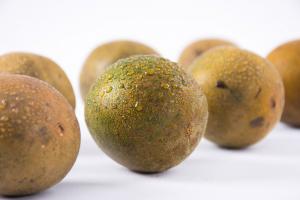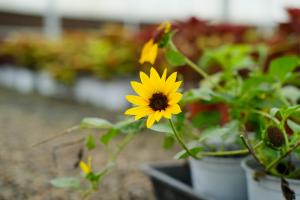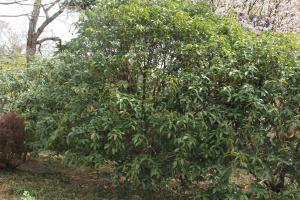Are your plants afraid of cold
Common family planted flowers are divided into two types: cold resistant type and cold afraid type. Cold resistant plants such as rose, Rhododendron, osmanthus, iron tree, Begonia, clove and Hosta can survive the winter even if placed outdoors or on the balcony. Hyacinth, Narcissus and other plants can be raised and bloom indoors in winter. Milan, Chlorophytum, green pineapple, fortune tree and other plants afraid of cold must be moved indoors
Many potted plants stop growing at about 5 degrees Celsius. When the temperature reaches 0 degrees freezing point, it will face a fatal blow. To be on the safe side, don't test the cold resistance of your plants. Move into the house in time
Entry preparation
Before flowers are moved into the room, the basin wall and bottom should be cleaned to prevent pests from being brought into the room

Branches with dead branches and diseases and insect pests shall be cut off
Thermal insulation and ventilation
Do not close the windows and doors in the first week after entering the room, so as to make the potted flowers gradually adapt to the temperature change from outdoor to indoor, otherwise it is easy to make the leaves of the potted flowers yellow and fall off

If it is impossible to put the flowers in the house under special circumstances, create a relatively closed space with large cartons, wooden boxes or films on the balcony, put the non cold resistant potted flowers in it, and then put small heat sources such as electric lights and hot water bags in it, which has the effect of heat preservation and antifreeze
When the room temperature drops to the lowest winter temperature, select a clean plastic bag slightly larger than the potted flowers, cover the potted flowers, seal and tie the bag mouth tightly, and then tie several small holes on the bag for ventilation. If water droplets are found in the plastic bag, it indicates that the temperature in the bag is high, so it is necessary to breathe in time, and lift a corner to pour water at the same time

If the room temperature exceeds 20 ° C, the doors and windows shall be half opened or fully opened in time to dissipate heat and reduce temperature, so as to prevent "stuffy damage" and weaken its cold resistance

Narcissus warming and flowering
Generally, Narcissus balls can bloom as scheduled after 45-50 days of normal watering. When the room temperature rises to about 18 ℃, it only takes 30 days to blossom; When the room temperature is 20 ℃, it only takes 25 days to blossom

1. Increase the temperature, move it to the outdoor sunshine during the day, or in front of the sunny glass window facing south indoors, until it blooms

2. Heat up the light, cover the flowerpot with a plastic cover, turn on the electric light, and stop when the temperature in the cover rises to 23 ℃
3. Increase the temperature of the electric heater, turn on the electric heater or place the hair dryer in a position that will not scald the daffodils, and let the warm wind gently blow the flowers until the flowers bloom for several days
4. Warm water to increase the temperature. Put a small amount of warm water into the basin to raise the water temperature to 12 ~ 15 ℃
See light
Generally, after entering the room, the flowers should be placed in a warm place facing the sun, such as in front of the window in the south

Potted flowers should be placed in a staggered manner, with ventilation and light transmission; Yang loving potted flowers are placed in the front row, shade tolerant or semi shade tolerant potted flowers are placed in the middle or back row, and the orientation of potted flowers is changed regularly or irregularly. It is not only conducive to the maintenance of winter potted flowers and the creation of photosynthesis conditions, but also conducive to keeping warm and increasing temperature, and keeping the branches and leaves not skewed but even and beautiful

Water and fertilizer management
You don't have to water it often. Only when it is found that the soil in the basin (less than 2 ~ 3cm) is dry into powder, or the basin body makes a crisp sound, can it be watered appropriately (no more watering). When the minimum temperature of the day is below 0 ℃, the best watering time is noon

The reason why the leaf tip is burnt yellow and the leaf color is not bright is that the indoor air humidity is not enough, and the air humidity is not equal to the moisture of the soil. For hanging flowers such as Chlorophytum and green pineapple, we should often pay attention to spraying water on the plant leaves to increase air humidity

Fertilization should be suspended during the winter. Flowers are in dormancy and have little demand for water and fertilizer. The pot soil is too fat and too wet, which is easy to cause flower root rot and death

Other
For jasmine, Milan, osmanthus and other flowers, pruning and finishing is needed, that is, removing dry branches, bare branches and pest branches, so that the limited nutrients in the basin soil can be concentrated to supply strong branches, which is conducive to new branches in spring

In case of warm or rainy days, don't move outdoors to bask in the sun or rain at will to prevent "catching a cold"
Don't put it in the stove or too close to the air conditioner or heater to prevent smoking and scorching the branches and leaves

Details determine life and death
Huahua told me so much
May everyone's flowers survive the winter safely

 how many times do yo...
how many times do yo... how many planted tre...
how many planted tre... how many pine trees ...
how many pine trees ... how many pecan trees...
how many pecan trees... how many plants comp...
how many plants comp... how many plants can ...
how many plants can ... how many plants and ...
how many plants and ... how many pepper plan...
how many pepper plan...






























